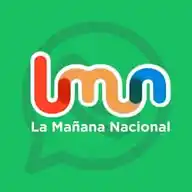
The Citizen Bulletin
125 subscribers
About The Citizen Bulletin
The Citizen Bulletin is an independent, digitally native news outlet that produces hard-hitting hyperlocal reporting and analysis for the greater region of Matabeleland, southwestern Zimbabwe. Explore our reporting here:
Similar Channels
Swipe to see more
Posts

*Help Us Measure the Impact of Our Reporting* At _*The Citizen Bulletin_*, we believe journalism should do more than inform—it should empower communities and inspire change. Our recent reporting series, A Thirsty City, explored the challenges and inequalities of Bulawayo’s water crisis. Now, we want to understand how our reporting has impacted you. This short poll will help us measure whether our work has informed action, improved knowledge, or sparked meaningful debate. We may also randomly select some readers or sources for a follow-up conversation to gather deeper insights. Your feedback is invaluable—thank you for taking a few minutes to share your thoughts!

How did you engage with our reporting on ‘A Thirsty City’? Check all that apply.

Life Without Access The city’s water crisis exposes deep inequalities, forcing vulnerable residents to confront daily struggles for basic survival. by MARGARET LUBINDA The current water crisis gripping Bulawayo was predicted years ago. The city’s geographical location and the effects of climate change have long been central to its water challenges. However, these natural issues are now compounded by human-made and structural problems. Researchers trace the roots of the crisis back to 1986, a time when water was still accessible through boreholes, bowsers, and manageable water-shedding schedules—a stark contrast to today. With the city’s population now at 668,949 and a housing waiting list of 130,000, the city’s crumbling sewer and water systems are buckling under immense strain. Rapid urbanization, particularly in high-density suburbs, has increased water demand, contributing to severe water stress. This explains why water shortages are most acute in high-density suburbs compared to eastern suburbs, where population density is lower. In Emganwini, for instance, taps have been dry for over a month. Residents now rely on four out of six operational boreholes, which are in poor condition. Residents are required to pay $2 monthly for borehole maintenance. Vulnerable groups—such as people with disabilities, pregnant women, schoolchildren, and the elderly—have normalized going days without bathing or washing clothes, reserving the little water they get for basic household chores. At Tashas, a neighbourhood grappling with a severe water crisis, two JoJo tanks were installed by a local politician a few years back. However, the tanks remain perpetually dry. “They were installed a long time ago, but they are always empty,” says a resident who requested anonymity for fear of reprisals. “We even arranged a meeting with community elders to inform our Councilor (Mpumelelo Moyo) that if JoJo tanks stay empty for too long, they crack. But he didn’t attend the meeting.” “We’ve tried to get water delivered via bowsers, calling everyone we could. But they ignore us or only send water sporadically,” says a resident. Residents allege Moyo lives in Montgomery, making him disconnected from their struggles. With no office to report issues, residents claim they rely on phone calls, which are never unanswered. Moyo, however, denies the accusations and insists that he lives in the ward. “We have had water since last week and on Friday, even as we speak, it’s still there,” Moyo told The Citizen Bulletin. “Some people have an agenda, and you have to understand if it is one person or the residents. Put the person on a conference call with me, because I stay in Emganwini, in the Island area, I do not stay in Montgomery as the person says.” For Khathazile Mathonsi, born in 1958, the water crisis is just another chapter in a life of hardship. Blind since childhood due to measles, Mathonsi left Zimbabwe in 2000 for South Africa, seeking a better life. For 12 years, she survived by begging on the streets of Johannesburg. Now a resident of Cowdray Park, Mathonsi’s home is filled with water containers she brought from South Africa, all filled to prepare for the city’s erratic water supply. “Over 200 people queue at the community borehole, and as a visually impaired person, accessing water is a serious challenge,” she says. The borehole is 400 meters from her house, but she often spends the day without water when her grandchildren are at school. Mathonsi is among the residents of Cowdray Park’s Hlalani Kuhle area, a community established after the central government’s 2005 Operation Murambatsvina program. The operation demolished informal housing, and residents were resettled in un-serviced stands. The suburb still lacks proper ablution facilities due to disputes between the Bulawayo City Council (BCC) and the central government. BCC argued that its bylaws prohibit the occupation of houses without proper sanitation, but the central government continued with the program. As a result, Hlalani Kuhle remains unserviced to date. In 2019, Finance Minister Mthuli Ncube allocated ZW$45.2 million for water and sewer projects in Cowdray Park, but four years later, little has changed. “I’ve been suffering from diarrhea for three days now,” Mathonsi told our reporter. “I have to use the Blair toilet, but I’m weak and have soiled my blankets and clothes. My grandchildren help clean up when they return from school.” In Pumula South, residents face a different crisis: overflowing sewage. For over a year, 17 households near Athens supermarket have endured a smelly, fly-infested environment, with wastewater pooling in their yards. “We’ve reported this issue multiple times,” says Hlengiwe Mpofu, a community leader. “We’ve visited Council offices, made phone calls, and received reference numbers, but nothing has been done.” Mpofu says the lack of water makes the situation worse. “We avoid using the toilets because flushing them only leaves waste behind. The smell is unbearable, and we fear for our health.” Ward 17 Councilor Sikhululekile Moyo acknowledges the issue but blames delays on a lack of funds. “This is a known hotspot for sewage bursts. The Council is working on a resolution, but the process is delayed due to financial constraints,” she says. Disability Development Consultant Tsepang Nare says local authorities should ensure that people with disabilities are not excluded from water interventions. “In other countries, authorities keep databases of people with disabilities and the elderly to ensure they receive targeted assistance during crises,” says Nare. Bulawayo Mayor David Coltart concedes that the city lacks deliberate policies for vulnerable groups but insists efforts are being made to assist everyone. “We do all in our power to ensure that vulnerable groups are the least affected,” Coltart says. “But we face serious challenges due to low dam levels, illegal gold panning in catchment areas, and frequent power cuts.” As the water crisis deepens, countless residents are left to navigate a parched and unequal reality, with no clear solutions on the horizon. Explore more of our narrative reporting here: https://thecitizenbulletin.org/series-story/life-without-access/

“Over 200 people queue at the community borehole, and as a visually impaired person, accessing water is a serious challenge,” say Khathazile Mathonsi, a blind 67-year old woman living in Cowdray Park. Read the full story here: https://thecitizenbulletin.org/series-story/life-without-access/ Illustration: ChatGPT_ Read our AI policy here: https://thecitizenbulletin.org/ethics/

Good evening, peeps! We hope you're all having an awesome evening! 🌟 *Just a quick reminder:* You can engage with our news stories here in the channel through our Admins. Send your comments or reactions directly to their inboxes, and they’ll share them with the group. Whether you want to stay anonymous or reveal your name, it's totally up to you! Feel free to add these Admins to your contacts and reach out anytime: Douglas: +263712925279 Thubelihle: +263718636459 Looking forward to hearing from you!

A Drying City’s Climate Crisis With dams drying up and rainfall patterns disrupted by climate change, residents are grappling with a worsening water crisis that exposes the city’s fragile infrastructure and deep inequalities. by FAIRNESS MOYANA Twenty nine-year-old Sibusisiwe Dlomo carefully straps her baby on her back, lifts a 20-litre bucket onto her head, and holds another container with her right hand. Having woken up at 5 a.m. to secure a spot in a long queue for water, Dlomo finally makes her way home three hours later with her precious haul. In New Magwegwe, her home, a high-density suburb; water shortages have become a routine. “We are sometimes forced to rely on this borehole, which serves hundreds of households,” she says, her face a grim reminder of how climate-induced droughts have reshaped her daily life. “Conflicts often erupt here, leading to verbal abuse and physical confrontations, especially targeting women and girls.,” says Dlomo. Bulawayo, the country’s second-largest city, is feeling the severe impacts of climate change, with changing weather patterns leading to recurring droughts and drying dams. These challenges, compounded by the El Niño phenomenon, are worsening the water crisis. According to the Weather Atlas, the city’s weather over the past five years has been marked by a subtropical steppe climate with notable seasonal shifts in temperature, humidity, and rainfall. Average annual precipitation is a meager 460mm. Data shows a troubling trend. In 2018, the city recorded an average annual temperature of 22.23°C and rainfall of just 28.66mm. By 2024, temperatures had climbed to 27.2°C, signaling rising climate variability. The El Niño drought of 2024 further exacerbated the situation, leaving the city’s supply dams nearly empty. Despite this year’s slightly better rainfall of 1,098.7mm compared to 491mm the previous year, dams remain at a precarious 44.43% capacity, with drawable volumes at just 167,623,509 cubic metres. The decommissioning of Umzingwane Dam in November 2023 and Upper Ncema Dam in October 2024 has only worsened the crisis. High-lying suburbs like Cowdray Park, Lobengula West, and Emganwini have been hardest hit, with some areas going nearly six months without tap water. The water crisis disproportionately affects women, who are forced to walk long distances to fetch the precious liquid for cooking and household chores. Desperate residents have turned to unsafe water sources, leading to health risks and waterborne disease outbreaks. Marvelous Mlauzi of Entumbane describes how erratic water supplies have turned basic sanitation into a luxury. “Most toilets here use the flush system, which depends on consistent water supply,” she explains. “Now, people resort to bushes for open defecation, especially schoolchildren and young men. It’s unhygienic and increases the risk of disease.” In 2024, diarrhoea cases surged to 555 by August, a staggering 693% increase from 370 cases in July, according to the Bulawayo City Council (BCC) reports. The Health and Child Care Ministry’s weekly Disease Surveillance Report in June 2024 noted 6,386 diarrhoea cases, including one death, mostly affecting children under five. “Bulawayo’s drying dams and erratic rainfall are clear indicators of how climate change is disrupting our city,” says Moffat Ncube, a researcher with Water Alliance. “The El Niño phenomenon, deforestation, and poor land management have all compounded the crisis.” Ncube warns that worsening climate patterns will continue to strain resources, leading to disease, suffering, and potential societal breakdown if urgent action isn’t taken. Pundits believe the city’s long-term solution lies in the Gwayi-Shangani Dam, a $1 billion project first proposed in 1992. Once completed, the dam’s potential yield of 634 million cubic metres could provide the city with a reliable water source. However, delays caused by bureaucracy and political wrangling have derailed the project repeatedly. In 2023, President Emmerson Mnangagwa promised to complete the dam ahead of the August general elections. The deadline was later pushed to December 2024 and now 2025. Zimbabwe is listed among the top African nations at risk of water stress. Experts are calling for robust climate adaptation strategies, including reforestation, improved catchment management, and investment in resilient water infrastructure. “Our hopes now lie with the completion of Gwayi-Shangani Dam, but beyond that, we need the Bulawayo City Council to craft policies that mainstream climate change,” says 54-year-old Nqobile Bhebhe, a community activist from New Magwegwe. “Without bold action, Bulawayo will continue to face this cycle of drought and despair.” Read more of our reporting series here: https://thecitizenbulletin.org/series/a-thirsty-city/

Did our reporting improve your understanding of Bulawayo’s water crisis?

🌍 Big News, #Matabeleland! We’ve just launched our rebranded news website: https://thecitizenbulletin.org/ ! 🎉 It’s fresh, faster, and designed to make it easier for you to stay connected with the stories that matter most—particularly designed to reflect our new model of reporting. *PLUS—* we’re kicking off with our latest and powerful reporting series: *’A Thirsty City*,’ which explores Bulawayo’s water crisis; uncovering its causes, impacts, and the stories of resilience from affected communities. 💡 *What’s New?* ✨ Sleek, clean design for easier reading. 📱 Improved mobile experience. 🔍 New, series-based model of reporting. Our mission remains strong—to produce unrivaled slow journalism that amplifies local voices, sparks community conversations, and holds power to account. 👉 Visit https://https://thecitizenbulletin.org/series-story/a-thirsty-city-exploring-byos-water-crisis/ to dive into our latest stories!

Dry Taps, Drained Wallets As the water crisis deepens, residents face the stark realities of dwindling supplies and rising costs. BY SHARON SIBINDI Blessing Moyo, a small livestock farmer, and mother of 3 from Emganwini, begins her day at 4 a.m. to feed her chickens. Her poultry project relies heavily on water—not just to keep the birds hydrated but also to maintain the cleanliness and hygiene of their pens but in Bulawayo, water is as scarce as it is essential. To cope, Moyo invested in a 1,000-liter JoJo tank for $180. Yet, filling it comes at a steep cost. “The tank has been a lifesaver, but I spend $50 every week on water deliveries,” she says. “That’s money I could have used to buy feed, medicine, or even expand my operations. Instead, I’m barely breaking even.” For small business owners like Moyo, the water crisis is not just an inconvenience but a daily struggle for survival. “Water is essential—not just for the chickens to drink but also for cleaning their pens and maintaining hygiene,” she says. Without it, the risk of disease looms, threatening to derail her entire operation. Late water deliveries often force her to fetch buckets herself, walking long distances to keep her business afloat. “It’s exhausting and discouraging,” she says, shaking her head. “I’ve had to reduce the number of chickens because I can’t afford to water them all. I even considered shutting down, but this is my livelihood—what else can I do?” Adding to the uncertainty, reports in 2024 revealed that the Bulawayo City Council (BCC) had received an unsolicited bid to use drones for surveying JoJo tank owners, potentially introducing a billing system that could further drive-up costs. BCC remains tight-lipped about the drone usage claims and did not respond to a request for comment. However, the local authority doesn’t have a bylaw explicitly prohibiting the use of JoJo tanks. Tinashe Ngwenya, who runs a car wash in Emganwini, says the cost of running his business would double if BCC implements its proposed drone surveillance system to monitor JoJo tank users. Ngwenya is struggling to make a profit due to the city’s erratic water supply. “Every morning, I get up at dawn to set up the car wash, hoping to attract customers early in the day. But without a reliable water supply, I often find myself sitting idle,” “Washing cars isn’t just about having soap and tools; it’s water dependent. If there’s no water, there’s no business,” Ngwenya adds. The inconsistency in water availability has driven many of his regular customers elsewhere. “People want a guarantee that when they bring their cars, they’ll leave with them clean. But I can’t promise that anymore,” he says with frustration. Competitors with JoJo tanks or boreholes are capturing the customers he has lost. Unable to afford such infrastructure, Ngwenya spends hours queuing at community boreholes to fetch water. “Sometimes I fill up buckets and jerry cans just to get through the day,” he says. “It’s exhausting, and it doesn’t even last long. I can’t compete with businesses that have steady water supplies.” The financial strain is evident. “My income has dropped significantly because fewer cars are coming in. On some days, I don’t even make enough to cover my operating costs, let alone take anything home,” he says. “I’m running at a loss most of the time.” Ngwenya is now contemplating a tough decision. “I’m considering closing down. This business was my main source of income, but without water, I feel like I’m fighting a losing battle. It’s heartbreaking, but I don’t know how much longer I can hold on.” In the food sector, the water crisis is threatening hygiene and profitability. Edwin Ncube, a butcher who runs a store in Nketa, spends over $200 each month on water deliveries to maintain good hygiene. “Hygiene is everything in this line of work,” Ncube says. “Without clean water, maintaining these standards becomes nearly impossible. The safety of my customers depends on this, and so does my reputation.” Ncube begins his day early to coordinate water deliveries before opening his shop. “If there’s a delay, I risk having to close for the day because I won’t compromise on hygiene,” he says. Despite his efforts, the crisis is taking a toll. “Customers are more cautious these days,” Ncube admits. “They ask a lot of questions about how I’m managing the water situation, and some have even stopped coming. The perception of poor hygiene, even when it’s not true, can destroy a food business.” Street vendors like Jane Ncube, who sell cooked food at Nketa 6 garage, are also grappling with the crisis. “I need water to cook and wash the food I sell,” she says. “I’ve had to buy buckets of water from other vendors for $1 each. I use five buckets a day, and this eats into my profits.” Bulawayo’s water challenges are deeply entrenched in its history. For decades, the city has faced persistent water shortages driven by reliance on supply dams located in a neighboring province, aging infrastructure, and outdated water management systems. The municipality depends on six key dams—Insiza, Inyankuni, Mtshabezi, Umzingwane, Lower Ncema, and Upper Ncema—all located in Matabeleland South. However, these dams have consistently fallen short of meeting the demands of the city’s growing population. In late 2024, Umzingwane and Upper Ncema dams were decommissioned due to critically low water levels, a development that exacerbated the crisis. “Life without consistent access to water is a daily struggle,” says Permanent Ngoma, Executive Director of the Bulawayo Progressive Residents Association (BPRA). “And on top of this, residents still have to pay their monthly city council bills. It’s unsustainable.” Bulawayo Mayor David Coltart describes the situation as catastrophic. “Our dams are just over 24% full, which is alarming for this time of year,” he said in December. “Despite the rains, we’ve experienced limited runoff because our catchment areas have been devastated by illegal gold panning.” In 2024, BCC requested that the central government declare the water crisis a national disaster. This would have enabled the city to mobilize local and international resources to address the problem. However, the request was rejected, and the central government instead appointed a technical committee to explore alternative solutions. “The crisis has only deepened,” Coltart says. “Frequent power outages limit the amount of water we can pump, and unfortunately, this means water rationing will remain in place for the foreseeable future.” Long-term solutions, such as building additional dams or tapping into alternative water sources like the Zambezi River Pipeline Project, remain on the table but come with hefty price tags. In the short term, experts have urged authorities to focus on repairing existing infrastructure, addressing illegal activities in catchment areas, and increasing public awareness about water conservation. Read more of our reporting series here: https://thecitizenbulletin.org/series/a-thirsty-city/

*Good day folks* Our e-paper on “A Thirst City” reporting series is *OUT!* Download it here: https://thecitizenbulletin.org/wp-content/uploads/2025/02/The_Bulletin_A_Thirsty_City.pdf We welcome your feedback. Feel free to engage with our content via any of our admin inboxes: Douglas: +263 77 644 6181 Thubelihle: +263 71 863 6459













